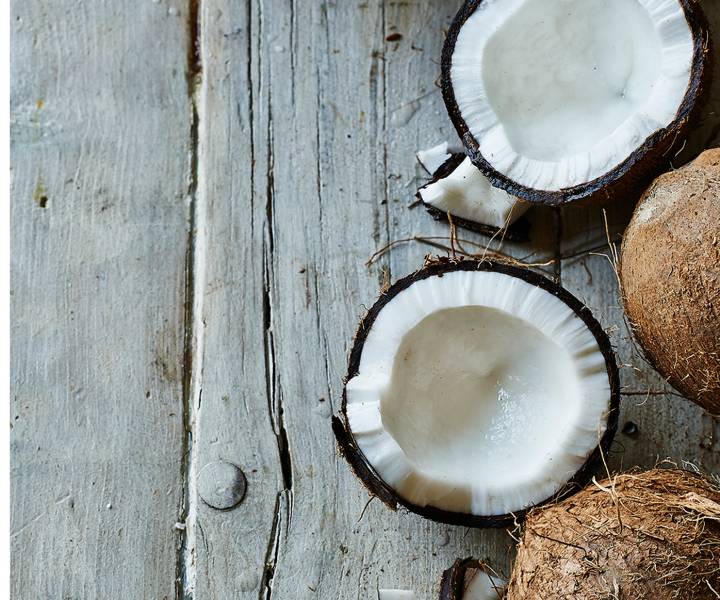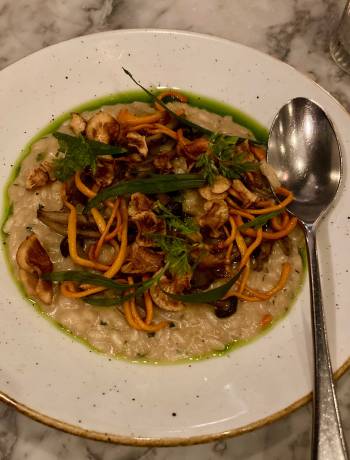Food
Coconut craze: get to know the differences between coconut products

From coconut flour to coconut milk and oil, it seems that everyone is going coco-nuts! Learn about all the different products and how you can use them in your cooking.
Coconut flour
A natural by-product of making coconut milk, the leftover meat is dried and ground to a soft, fine flour. Popular among those following a gluten-free diet and lauded in the Paleo-eating world for its high levels of protein, fibre and low-glycaemic index, coconut flour can be tricky to use. Unlike a lot of naturally gluten-free flours, it can’t be used like-for-like as it is highly absorbent and requires a completely different ratio of liquids and raising agents to produce a true crumb, so follow a trusted recipe rather than experimenting. Use for baking (especially gluten-free recipes), and for coating meat or fish before frying.
Coconut milk in a can
Coconut milk is an emulsion of two fluids: coconut cream and coconut water. At room temperature the milk will be smooth and emulsified, but if you chill a can of coconut milk it will separate into cream (at the top) and coconut water (at the bottom). Use for savoury cooking, such as Asian curries and sauces. It has a velvety, creamy texture.
Coconut milk in a carton
This is much the same as coconut milk in a can, except it will contain more water, additional sweeteners and some stabilisers to keep it creamy. Use for drinks or to pour over cereal as a dairy-free milk alternative.
Coconut cream
The rich, thicker part of coconut milk. You can buy this in cartons, or chill a can of coconut milk to separate it out. Use for enriching sauces, or whip with icing sugar as a dairy-free cream substitute. Not to be confused with...
Creamed coconut
The unsweetened, dehydrated, fresh meat of a mature coconut, ground to a semi-solid, white, creamy paste. It comes in a hard block, which is chopped or grated before use. Use for stirring into sauces or curries or add warm water to grated creamed coconut to turn it into coconut milk or cream.
Coconut water
Taken from the centre of young, green coconuts, this naturally sweet water is low in calories and packed full of potassium, making it a favourite as a post-exercise drink or as part of a nourishing, power-boosting smoothie. Definitely a drink rather than an ingredient. Use for smoothies. Try blending a cup of coconut water with one frozen banana, a handful of kale or baby spinach, a dash of maple syrup and possibly a teaspoon of maca powder for a nourishing breakfast drink.
Coconut oil
Solid at room temperature, you can buy coconut oil in two forms: the raw, virgin kind that has a rich coconut flavour, or a refined version that isn’t raw but also doesn’t have any coconut flavour to speak of. Use for roasting and baking, in place of other cooking oils. Great in raw treats and puddings too, helping ingredients to set and bind.
Desiccated coconut and coconut flakes
Desiccated coconut is the dried and finely grated flesh of the coconut. Usually unsweetened, although the coconut meat still retains a hint of natural sweetness when dried. Coconut flakes are a larger cut of the coconut flesh, also dried. Use for baking (sweet and savoury), for decoration or add to granola or trail mix. Also look out for…
Coconut nectar sugar
Made from the sweet nectar of the coconut blossom, this has a light caramel flavour and is low-GI, although it’s no lower in calories than standard sugar. You can use it like-for-like, but it gives a darker colour to bakes.
Coconut yogurt
Pure coconut yogurt is made from freshly squeezed coconut cream, with added water and stabilisers made from coconut milk. It is so rich that a little goes a long way. Useful for people who need to avoid dairy, it adds a creaminess to mousses and icings and moistness to tea breads and cakes.
Ready to cook? Don't miss...












